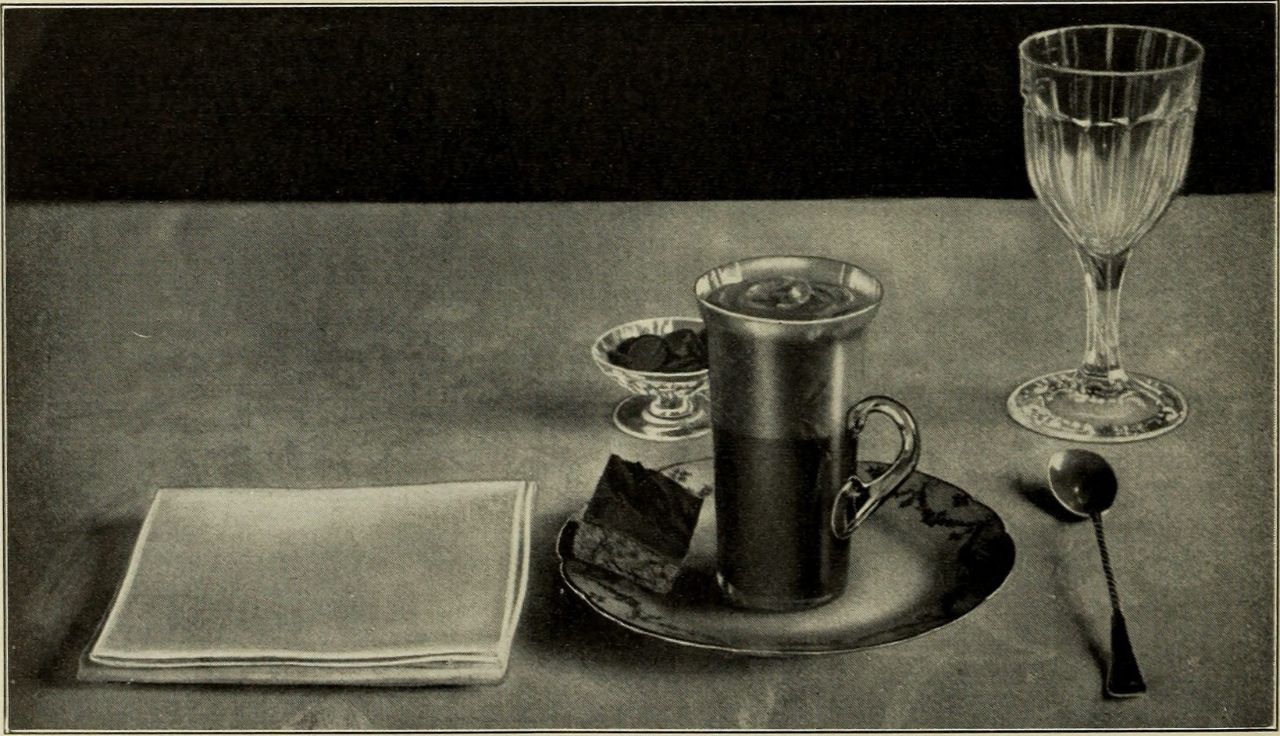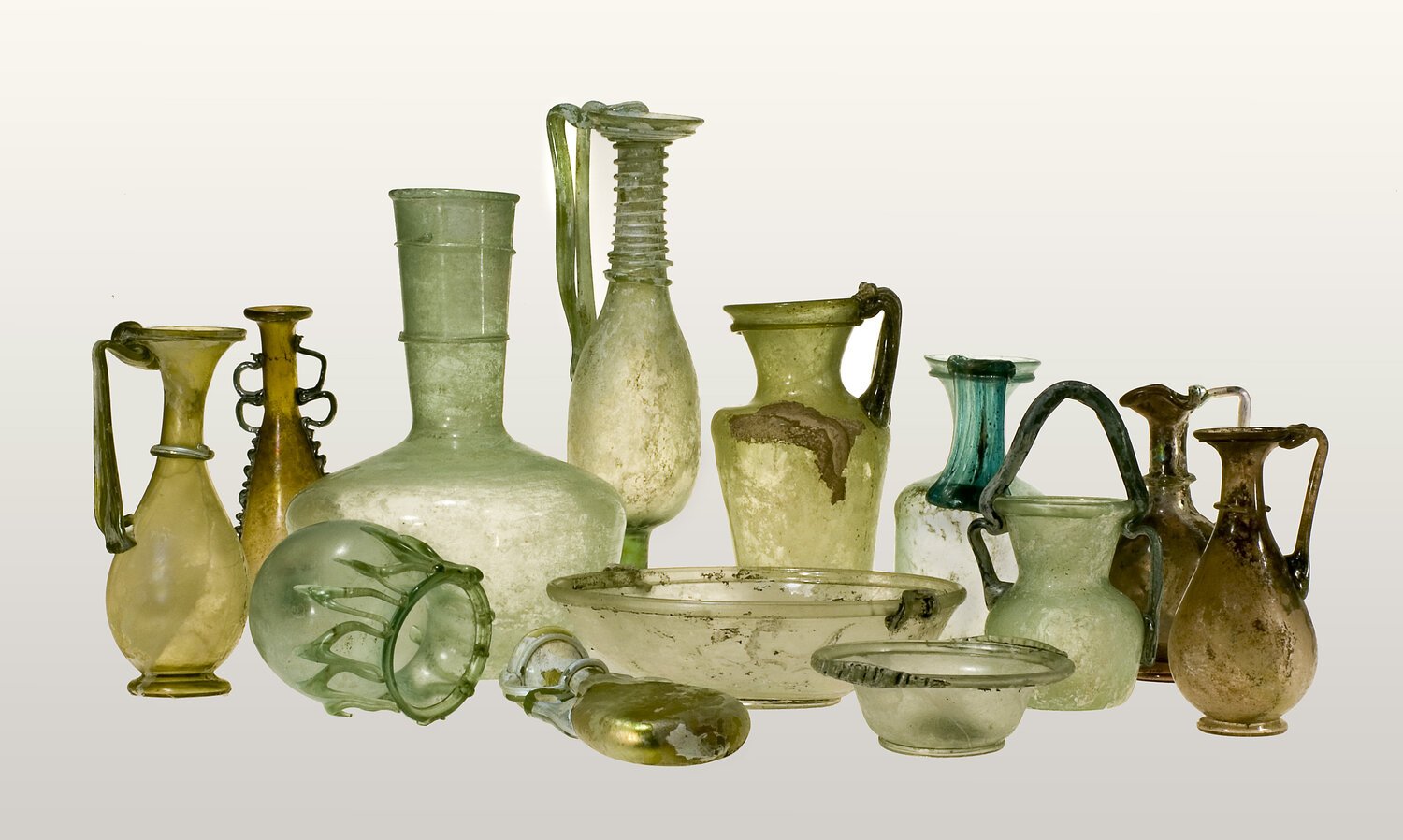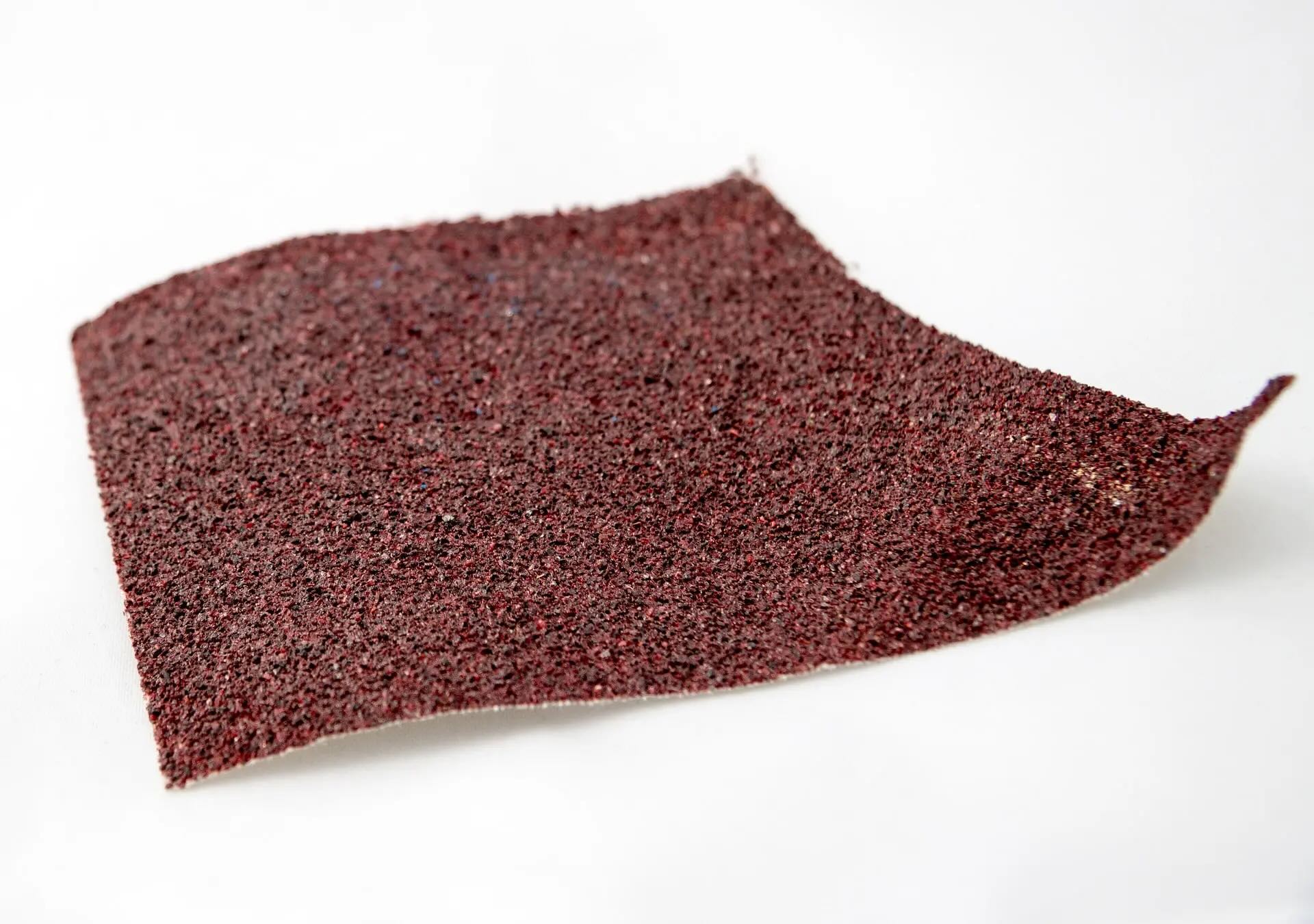

Tableware
When Was The Napkin Invented
Modified: January 9, 2024
Discover the history of tableware and learn about the invention of the napkin. Explore the origins and evolution of this essential dining accessory.
(Many of the links in this article redirect to a specific reviewed product. Your purchase of these products through affiliate links helps to generate commission for Storables.com, at no extra cost. Learn more)
Introduction
Tableware has long been an essential part of human civilization, serving not only practical purposes but also reflecting cultural practices and social etiquette. Within the realm of tableware, one item that often takes center stage is the humble napkin. While seemingly insignificant, the napkin has a rich history that spans centuries, evolving from simple cloth squares to the convenient paper napkins we use today.
In this article, we will delve into the fascinating journey of the napkin, exploring its early origins, the invention of paper napkins, its significance in different cultures, the evolution of its design, and the environmental impact associated with its usage. Let’s embark on this journey and discover the hidden stories behind this seemingly everyday item.
Key Takeaways:
- The humble napkin has a rich history, evolving from a symbol of luxury in ancient Rome to a convenient and eco-friendly essential in modern dining, reflecting cultural practices and environmental awareness.
- Understanding the cultural significance of napkins helps us appreciate the diversity of dining customs and ensures we respect and adapt to different practices when interacting with people from various cultural backgrounds.
Read more: When Was The Bathtub Invented
Early History of Napkins
The use of napkins dates back thousands of years, with evidence of their existence in various ancient civilizations. In ancient Rome, for example, napkins were typically made of linen or cotton and were used primarily by the wealthy. These napkins served a practical purpose of wiping hands and mouths during meals, but they also carried symbolic significance. In Roman culture, napkins were considered a mark of luxury and were often intricately embroidered or decorated.
In ancient China, napkins were also in use, made of silk or other luxurious fabrics. They were used in formal dining settings and held great importance in society. Interestingly, early Chinese napkins were not only used for wiping hands but were also employed as a status symbol. The more elaborately designed and adorned the napkin, the higher the social standing of the individual using it.
During the Middle Ages, napkins became more widely used across Europe, although their availability was still limited to the upper classes. Instead of individual napkins, long communal cloth strips were used, with each person using a portion of the cloth for wiping their hands and face. These communal napkins were usually made of coarse fabrics and required regular washing to maintain hygiene.
It wasn’t until the Renaissance period that individual napkins started to become more prevalent. As society became more refined, so did dining etiquette. Napkins were seen as an essential element of a well-set table and were often personalized with monograms or family crests to showcase the status and identity of the diners.
Overall, the early history of napkins reveals their gradual evolution from functional items to symbols of luxury and status. As societies developed and table manners evolved, the demand for napkins increased, leading to the innovation and development of new forms and materials.
Invention of Paper Napkins
The invention of paper napkins revolutionized the way we approach table manners and dining etiquette. While cloth napkins had been the norm for centuries, the need for a more convenient alternative led to the development of paper napkins.
The credit for the invention of paper napkins goes to the German brothers Karl and Katharina Engelhardt. In the late 19th century, Karl Engelhardt, a stationery company owner, noticed that his customers were using blotting paper to wipe their pens. Recognizing the potential for this absorbent paper, he had the idea of creating disposable napkins.
In 1887, Karl Engelhardt patented his invention, a disposable paper napkin. These early paper napkins resembled large squares of blotting paper and were primarily used in restaurants and hotels, where the convenience of disposable napkins greatly simplified the cleaning process. However, they were not widely available to the general public.
The popularity of paper napkins grew significantly in the early 20th century with the introduction of folded and embossed designs. These advancements in napkin production made them more visually appealing and added a touch of elegance to table settings. Paper napkins quickly gained popularity in households, replacing the traditional cloth napkins in many homes.
Over time, paper napkins continued to improve both in quality and design. Patterns, colors, and textures were introduced to cater to different preferences and occasions. Manufacturers began producing napkins specifically for events such as weddings, birthdays, and holidays, allowing individuals to incorporate a touch of personal style into their table settings.
Today, paper napkins have become an integral part of our daily lives, not only for dining but also for various other purposes. Whether it’s a casual picnic, a formal dinner party, or a quick snack on-the-go, paper napkins provide a convenient and hygienic solution. Furthermore, the advancement in environmental consciousness has paved the way for the development of eco-friendly options, such as recycled or compostable paper napkins, as a more sustainable alternative.
The invention of paper napkins revolutionized dining experiences, offering a practical and disposable solution that has become an essential item in households worldwide.
Napkins in Different Cultures
Napkins have played a significant role in various cultures throughout history, each with its unique customs and practices surrounding their use. Let’s explore how different cultures approach napkins:
1. Western Cultures: In Western cultures, the use of napkins is integral to table etiquette. They are typically placed to the left of the plate or neatly folded on top. It is customary to place the unfolded napkin on the lap once seated, using it to wipe the mouth and hands during the meal. At the end of the meal, the napkin is loosely folded and placed to the left of the plate.
2. Middle Eastern Cultures: Middle Eastern cultures have their unique approach to napkins. In Arab cultures, communal platters and flatbreads are commonly used for meals. Instead of individual napkins, large communal towels, called “mendil,” are provided at the table, allowing diners to clean their hands before and after the meal.
3. Asian Cultures: Asian cultures exhibit diverse practices regarding napkins. In Japan, for example, the use of hand towels, known as “oshibori,” is customary before and during meals. These small, damp towels are typically provided at restaurants or at the beginning of a meal to refresh hands and face. In China, individual napkins are widely used, and the concept of disposable napkins has gained popularity in recent years.
4. Indian Cultures: In Indian cultures, the use of napkins varies depending on regional customs. In some parts of India, traditional dining practices involve eating with hands and licking fingers, eliminating the need for napkins. However, in urban areas and formal dining settings, cloth napkins or disposable paper napkins are commonly provided.
5. African Cultures: African cultures exhibit a range of practices when it comes to napkins. In some African countries, communal dining is prevalent, and participants may use their hands to eat. In more formal settings, cloth napkins may be provided for guests.
It’s important to note that cultural practices surrounding napkins continue to evolve, and regional variations within these cultures exist. Additionally, with the globalization of dining etiquette and the influence of Western practices, the use of napkins is becoming more standardized worldwide.
Understanding the cultural significance of napkins helps us appreciate the diversity of dining customs and ensures we respect and adapt to different practices when interacting with people from various cultural backgrounds.
The napkin is believed to have been invented in ancient China around 2nd century BC, made from soft paper. It was later introduced to the Western world in the 14th century.
Evolution of Napkin Design
The design of napkins has gone through a fascinating evolution over the years, reflecting changing styles, preferences, and societal values. From simple cloth squares to intricate patterns, let’s explore the journey of napkin design:
1. Plain Cloth Napkins: In the early days, napkins were primarily plain squares of cloth, often made from linen or cotton. These simple designs served the practical purpose of wiping hands and mouths during meals. However, as dining etiquette developed and table settings became more elaborate, the demand for aesthetically pleasing napkins grew.
2. Embroidered and Monogrammed Napkins: As table manners became more refined, napkins started to be personalized with embroidered patterns or monograms. Elaborate designs were carefully stitched onto the fabric, showcasing the craftsmanship and attention to detail. Monogrammed napkins became a status symbol, reflecting the identity and social standing of the individual or family using them.
3. Folded and Shaped Napkins: With the advent of folding techniques, napkins began to take on more elaborate forms. Intricate folds and shapes, such as the classic “fan” or the elegant “bishop’s hat,” became popular in formal dining settings. These folded designs added a touch of elegance to table settings and contributed to the overall aesthetic appeal of the dining experience.
4. Printed Patterns and Colors: In the early 20th century, advancements in printing technology allowed for the introduction of printed patterns and colors on napkins. Manufacturers started producing napkins with floral prints, geometric patterns, and vibrant colors, catering to a wide range of preferences and occasions. Printed napkins became a way to add style and flair to table settings, allowing individuals to express their personal taste and creativity.
5. Textured and Embossed Napkins: As the variety of napkin designs expanded, so did the textures and finishes. Embossed napkins with raised patterns and textured surfaces became increasingly popular. These napkins added a tactile element to the dining experience, enhancing the sensory pleasure and further elevating the overall aesthetics of the table setting.
6. Eco-Friendly and Sustainable Options: In recent years, the increasing focus on sustainability and environmentally friendly practices has influenced the design of napkins. More and more manufacturers are offering eco-friendly options, such as recycled paper napkins or napkins made from biodegradable materials. These designs align with the growing awareness of the environmental impact of disposable products and provide consumers with sustainable choices.
The evolution of napkin design not only reflects changing tastes and decorative trends but also showcases the craftsmanship and creativity of designers throughout history. Today, napkins continue to evolve, with innovative designs and materials that cater to diverse preferences and environmental concerns.
Read more: When Was AC Invented
Environmental Impact of Napkins
The widespread use of napkins, particularly disposable ones, raises concerns about their environmental impact. Let’s explore the key considerations regarding the environmental footprint of napkins:
1. Deforestation: The production of paper napkins involves the harvesting of trees, contributing to deforestation. Forests play a crucial role in ecosystem balance, climate regulation, and providing habitats for wildlife. Unsustainable logging for the production of napkins can lead to the loss of biodiverse ecosystems and exacerbate climate change.
2. Energy and Water Consumption: The manufacturing process of napkins, whether paper or cloth, requires significant energy and water usage. Powering factories, processing raw materials, and treating wastewater all contribute to environmental resource consumption. Additionally, the production of paper napkins involves bleaching agents and chemicals that can further impact water quality.
3. Waste Generation: Disposable napkins contribute to the growing waste generation problem. Once used, these napkins are discarded, eventually ending up in landfills. Inadequate waste management and improper disposal can lead to pollution, greenhouse gas emissions, and soil degradation. Furthermore, napkins made from synthetic materials may not break down easily, further contributing to the accumulation of waste.
4. Recycling and Compostability: A positive step towards reducing the environmental impact of napkins is through recycling and composting. Some paper napkins can be recycled, reducing the need for virgin materials. Additionally, there are compostable options available made from biodegradable materials, which break down naturally and contribute to nutrient-rich soil. By properly disposing of napkins through recycling or composting, we can divert them from landfills and reduce their overall impact.
5. Sustainable Alternatives: Opting for sustainable alternatives can significantly reduce the environmental impact of napkins. Cloth napkins, for example, can be reused multiple times, reducing waste generation. Using organic cotton or linen napkins further reduces the ecological footprint associated with pesticide use and chemical treatments. Additionally, choosing recycled or FSC-certified paper napkins ensures that they come from responsibly managed sources.
6. Consumer Behavior: Ultimately, consumer behavior plays a vital role in minimizing the environmental impact of napkins. Using napkins mindfully and only when necessary, avoiding excessive use or wastage, and choosing reusable or eco-friendly options all contribute to a more sustainable approach. Small changes in behavior can have a cumulative effect and make a significant difference in reducing the environmental footprint of napkins.
It is essential to consider the environmental impact of napkins and make conscious decisions that balance convenience with sustainability. By adopting sustainable practices, supporting responsible production methods, and properly disposing of napkins, we can contribute to a healthier planet and create a more sustainable future.
Conclusion
The evolution of napkins is a testament to the ever-changing needs and preferences of society. From plain cloth squares to intricately designed paper napkins, these humble tableware items have played a vital role in our dining experiences for centuries.
Throughout history, napkins have not only served a practical purpose of wiping hands and mouths during meals but also carried symbolic significance and reflected cultural practices. From the luxurious embroidered napkins of ancient Rome to the communal towels of Middle Eastern cultures, the diverse uses and customs surrounding napkins offer a glimpse into the rich tapestry of human traditions and table manners.
The invention of disposable paper napkins brought about a paradigm shift, transforming the way we approach dining etiquette. The convenience of disposable napkins revolutionized table settings, while advancements in design and printing technologies allowed for a myriad of patterns, colors, and textures to cater to various preferences and occasions.
Yet, as we appreciate the convenience and aesthetics of napkins, it is crucial to consider their environmental impact. The production of napkins, particularly disposable ones, contributes to deforestation, energy and water consumption, and waste generation. By opting for sustainable alternatives, recycling, and practicing mindful consumption, we can minimize the ecological footprint of napkins and work towards a more sustainable future.
In conclusion, napkins hold a deeper significance beyond their utilitarian function. They carry cultural traditions, serve as expressions of personal style, and reflect our collective efforts towards sustainability. As we set our tables and unravel our napkins, let us cherish the stories woven within them and remember our responsibility to protect the planet we share.
Frequently Asked Questions about When Was The Napkin Invented
Was this page helpful?
At Storables.com, we guarantee accurate and reliable information. Our content, validated by Expert Board Contributors, is crafted following stringent Editorial Policies. We're committed to providing you with well-researched, expert-backed insights for all your informational needs.















0 thoughts on “When Was The Napkin Invented”